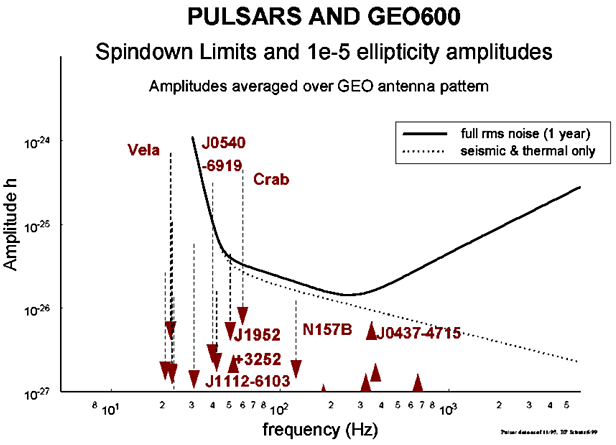8. The Future
As we have seen, pulsar astronomy has come a long way in the thirty-five years since the discovery of pulsars in Cambridge. Pulsars have become unique and invaluable tools in many areas of physics. However, much work remains to be done - we still do not understand the emission process in detail, and the most exciting objects like a pulsar orbiting a black hole are still to be found. The advent of sensitive high-energy satellite telescopes has opened up many new areas of pulsar research, and pulsar astronomy has become a multi-wavelength effort no longer the exclusive domain of radio astronomers. Clearly, the next few years will prove to be very exciting and new, unexpected discoveries will be made.
An example of such a new frontier is the completely new astronomical window which will open up soon when the first large scale gravitational wave detectors become operational. A number of such detectors are currently built, like the US LIGO detectors or the German-British GEO600 project. Both projects will try to achieve the first direct detection of the gravitational waves predicted by Einstein's General Relativity. Pulsar astronomy has already proven - without doubt - that gravitational waves exist (see the PSR B1913+16 experiment described earlier) but of course physicists are keen on actually measuring them directly.
Pulsars and neutron stars
are again the top candidates for emitting gravitational radiation, either
because they emit these waves while rotating fast and deviating slightly
from a perfect spherical shape, or because they are in compact binary systems.
However, the detection of gravitational waves is difficult and all detectors
currently built may only be just able to detect such sources. As an example,
Figure 1 shows the sensitivity curve of GEO600 superposed with the expected signal
from some selected pulsars. This situation will, however, change dramatically
once the planned space gravitational detector LISA is built
and operational.

|
|
Figure 1. The predicted sensitivity of the GEO600 gravitational wave detector (courtesy Prof. B. Schutz) is shown as the solid black line. For a signal to be detectable it must lie above this line. The expected signals from a number of pulsars are shown (some as upper limits by dashed lines). It can be seen that only one or two pulsars (e.g. the Crab) might be detectable. |
We hope that these notes have given you an insight into the world of pulsar astronomy and highlighted how these objects are not only of great interest in themselves but are invaluable tools for understanding a broad range of physics and astrophysics.
